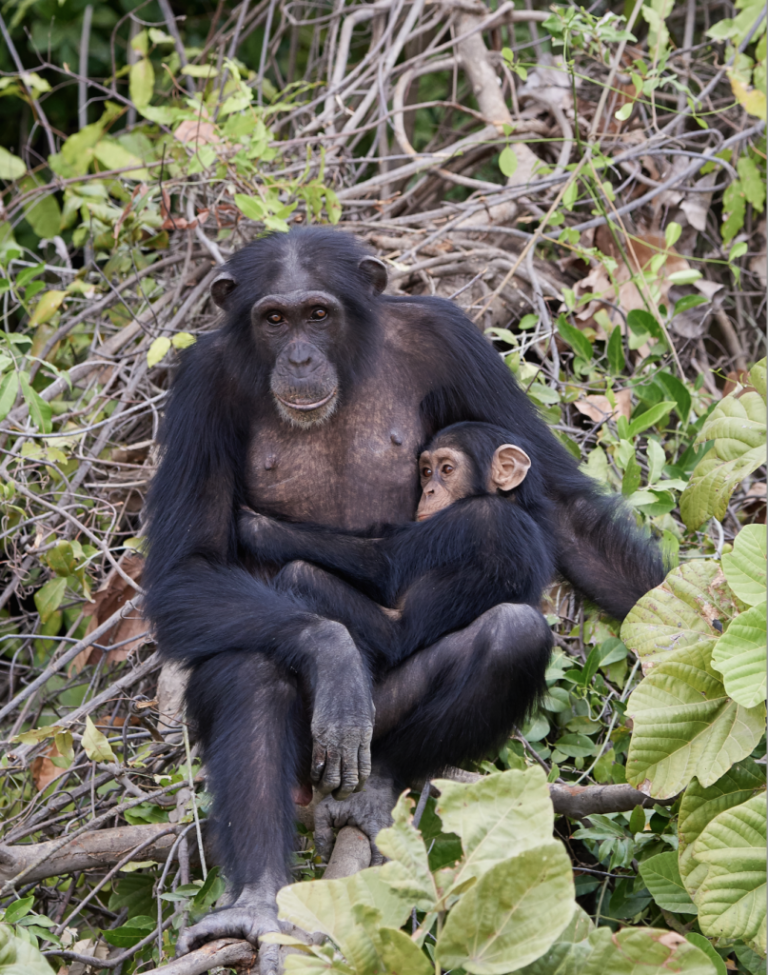Species in Peril:
CHIMPANZEES

Our closest relatives are very much in danger
They are crazy smart
Chimpanzees are extremely intelligent and can solve a wide range of issues set before them by human trainers and experimenters. Several researchers have taught chimps to communicate using sign language or languages based on tokens or graphic representations. However, the implications of these language studies have been disputed.
Apes have not developed actual language, according to critics, in the sense that they grasp “words” as abstract symbols that may be joined in meaningful new ways. Other researchers believe that chimps have developed a true recognition of “words” as abstractions that may be applied in new settings as a result of more recent language training.
Chimpanzees are highly clever creatures who can solve a wide range of challenges brought to them by humans. A handful of scientists have taught chimps to communicate using sign language or languages based on tokens or graphic representations. However, there has been debate about the implications of these linguistic studies.
They are very social
Chimpanzees live in groups ranging in size from 20 to more than 150 people, but they spend the most of their time moving in tiny, transient groups of a few individuals. These groups can be made up of people of any age and gender. Males and females both travel alone on occasion.
This fission-fusion civilization might be made up of four different types of people: all-male, adult females and progeny, adults of both sexes, or a single female and her kids. These smaller groups come in a range of shapes and sizes, and they serve a variety of purposes.
An all-male troop, for example, might be organized to hunt for meat, while a group of breastfeeding females serves as a “nursery group” for the young.
They need our help
The chimpanzee is listed as an endangered species on the IUCN Red List. Chimpanzees are found both inside and outside national parks and are legally protected in much of their range. There are estimated to be between 172,700 and 299,700 chimps left in the wild, down from around a million in the early 1900s.
Chimpanzees are included in Appendix I of the Convention on International Commerce in Endangered Species (CITES), which means commercial international traffic in wild-sourced specimens, as well as any other international trade in parts and derivatives, is prohibited.
Habitat destruction, the illegal pet trade, poaching, and disease are the most serious risks to the chimpanzee. Deforestation has harmed chimpanzee habitats in both West and Central Africa. The construction of roads is a major contributor to deforestation and habitat loss.
Chimps need all the help they can from the US in order for us to see a rebound in their population.
A Few More Facts About Chimpanzees
- Chimpanzees use their knuckles for walking and they will use all four knuckles.
- They can live for more than 50 years, but the average is 30 years
- An adult chimp is seven times stronger than a human.
- They love to swing through the trees and spend much of their lives in the tree canopies.
- Females reach reproductive maturity by age 13 and can give birth at any time of the year
- Chimpanzees are one of the few animals that are known to use tools
- Chimpanzees make around 30 different vocalisations.
SAFE Worldwide supports J.A.C.K. Sanctuary
J.A.C.K. Sanctuary was started in 2006 in Lubumbashi, DRC by two primate lovers, Franck & Roxane CHANTEREAU, who still run the sanctuary and rehabilitation center as volunteers in addition to their professional life. The sanctuary exists to facilitate wildlife confiscations by the authorities by providing a safe place for the orphans to live while a suitable wildlife environment is found where they can be released back into the wild.
Along with the DRC Wildlife Authorities, a pre-release program is scheduled before releasing the orphans back into the wild. If nothing is done to protect chimpanzees and other endangered primates, they will have totally disappeared from the wild by 2050.
Species Name
Pan troglodytes
Estimated Population
250,000 globally
Conservation Status
Endangered
Range
West and Central Africa
Reasons for Population Decline
Poaching
Habitat loss
Illegal Pet Trade


